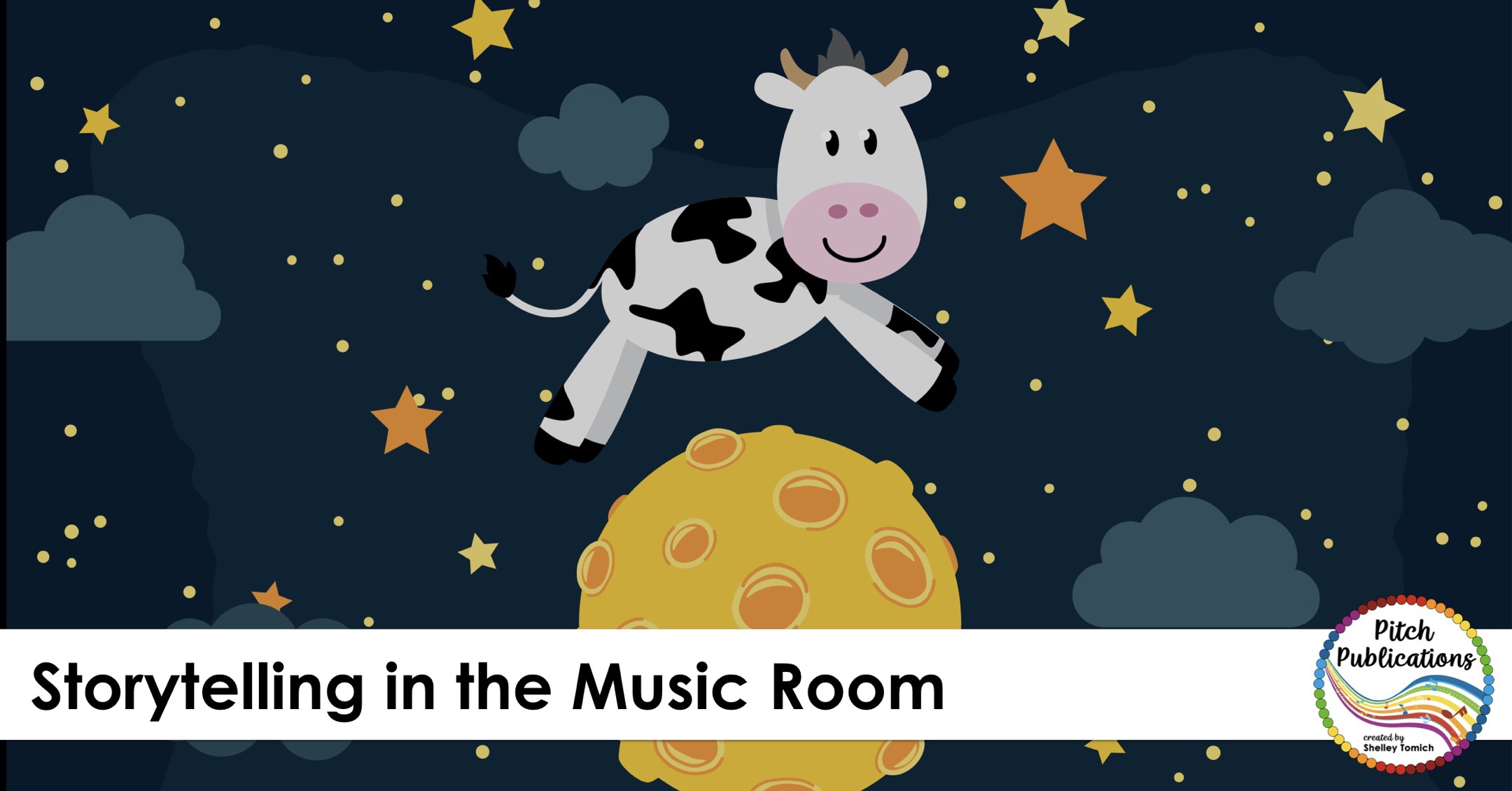
Why are Nursery Rhymes and Folks Songs so Important?
For younger students, nursery rhymes help with language development; they hear the sounds of vowels and consonants and later on, learn how these sounds combine into words. I see this in my own young children as they play and sing these songs. Nursery rhymes also teach pitch, volume, voice inflection and the rhythm of language in general. Do you sound different when you tell a sad story like “Humpty Dumpty” vs. when you tell a happy story like “Mary Had Little Lamb?” What about an angry one like “Rain, Rain, Go Away?” Or a scared one like “Little Miss Muffet?” Children learn so much about how to express emotions and feelings through these simple songs and rhymes!
Nursery rhymes are easy to remember and repeat – they have simple structures and patterns that help with storytelling sequencing and provide beginning experiences with literary devices like alliteration (“Baa, Baa, Black Sheep”). The rhythmic patterns and rhyme schemes provide a foundation for greater study of poetic structures.
For me, the greatest value comes in the connection to our culture, history, and community. Most of these nursery rhymes and folk songs were developed in times when stories and songs were the primary form of entertainment. There were no iPads, no TV, no technology, no emails, no formalized sports teams, etc. A busy weekend consisted of a neighborhood party at the barn or a cookout around the camp fire. Nursery rhymes help preserve cultures and experiences that spanned generations. When people have these shared experiences it brings a sense of togetherness that is hard to duplicate.
A Revelation in My Classroom

I teach in a moderate-high socioeconomic area where my students (for the most part) have every resource and opportunity available to them. While this has many benefits and makes my life as a music educator easier in some ways, it does have a couple of drawbacks.
My kids are super busy – to the point of being TOO busy. They participate in soccer, traveling softball teams, karate, piano lessons, violin lessons, STEAM lessons, dance, ballet, etc. Most of my older kids already have cell phones and iPads. I incorporate technology in my classroom a lot and rarely do I have to actually teach a child how to use a device. Most of them ask to bring their own. They are listening to the popular stations on the radio and most own the top ten latest and greatest albums by everyone from Taylor Swift, to Justin Bieber, and thanks to me, The Piano Guys.
At the end of many classes, I do a sharing time that I call Music Idol. This is just a quick 5 minute activity for kids to share a song or dance or whatever. Kids need more of this sharing time (remember show and tell!) and I get comments all the time on how much the students enjoy these 5 minutes at the end of class.
I have found over the past 12 years of teaching that I am seeing less and less simple nursery rhyme and folk songs shared. When they are shared, I am astounded at how many kids 1) Do not know the words to VERY simple songs and 2) Are not even close to singing the right pitches!
I commented awhile ago to a teacher friend about how sad I was to see that how the practice of sharing these songs with our families and students has been lost. She said, “Well you are the music teacher. If you aren’t going to continue this, then who is?” Um, duh.
As a music teacher in the 21st century, a big part of my job is making sure students are taught music classics in the same manner a literature teacher must make sure we hold on to the literature classics!
I do teach folk songs as part of my normal music curriculum, but I never get to as many as I would like, and I sometimes feel like the importance and history of these songs is somewhat lost when I am busy teaching solfege or rhythm through these songs.
So What Now?
Now that I had identified a problem I had in my classroom – kids needed more exposure to folk songs and nursery rhymes – it was my job to make it happen. Therefore I turned to something I DO know about and that is storytelling in the classroom.
Nothing captivates children like a good story. Need a way to settle kids down? Have them stop and listen to a good story! Classroom management problems? They are GONE when you start telling a story and acting it out yourselves! Need to introduce a concept and unsure how? Turn it into a story! Thank about how you yourself can get lost in a really good book or watching a good movie. There is something about stories that captivate us and give us a sense of community.
And what are nursery rhymes really? Many of them are simply strange stories told in verse form! I mean, no one is going to tell a story about a poor guy who was hanging out on a wall, fell off, and just couldn’t be helped! That’s a terrible story! But put it this way and it becomes a fun rhyme passed down for generations!
Humpty Dumpty sat on a wall,
Humpty Dumpty had a great fall,
All the king’s horses and all the king’s men,
Couldn’t put Humpty together again!
How to Integrate into your Classroom
Many of you already do a lot of activities with folk songs and nursery rhymes. Take those activities and step it up a notch. Make it fascinating by emphasizing the storytelling. Make students feel more connected to the material by sharing the history of these songs. It helps validate the material when students learn their great-grandparents sang this stuff!
If you are like me and needed a further avenue for sharing these songs, make a little Featured Song of the Week or Featured Song of the Month as a part of your classroom. I simply call them “Featured Songs” so I am not necessarily bound by a time-frame. Sometimes I need 4 lessons to completely teach or cover a song, and sometimes I need one! Sometimes I know I have so much other lesson material to cover that I need to skip a week! Or we just sing through the song once or twice at the beginning, and I know the kids are getting exposure to the lyrics and pitches of the song.
I use my Storybook Series to help me introduce and practice these songs. My ELL learners (and I do have some!) especially love the pictures. I was nervous that my older kids would find them “babyish” but they have been eating them up! They love learning all the fun little facts about songs that their parents and grandparents sang! I can’t tell you how many kids never realized “The Alphabet Song,” “Baa, Baa, Black Sheep,” and “Twinkle, Twinkle, Little Star” share a melody!
Thanks so much for reading! I would like to know how YOU integrate folk songs and nursery rhymes in your class! Comment below or come find me on Facebook and let’s connect!
-
 Storybook Series – Peter Peter Pumpkin Eater – Nursery Rhyme and Folk Song
Storybook Series – Peter Peter Pumpkin Eater – Nursery Rhyme and Folk Song -
 Storybook Series – Polly Put the Kettle On – Nursery Rhyme and Folk Song
Storybook Series – Polly Put the Kettle On – Nursery Rhyme and Folk Song -
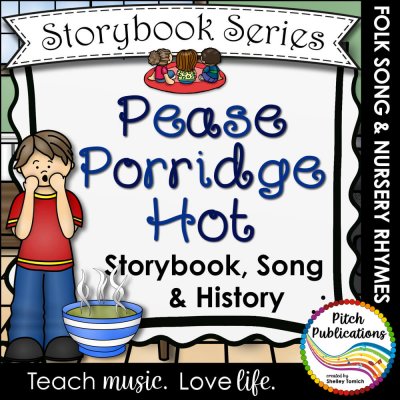 Storybook Series – Pease Porridge Hot – Nursery Rhyme and Folk Song
Storybook Series – Pease Porridge Hot – Nursery Rhyme and Folk Song -
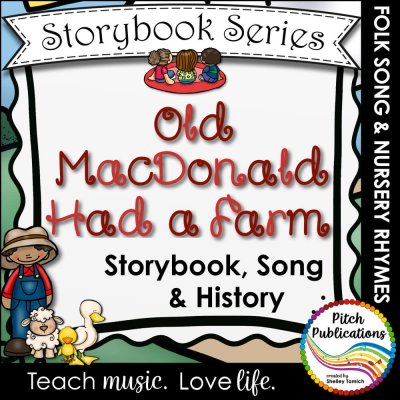 Storybook Series – Old MacDonald Had a Farm (McDonald) – Nursery Rhyme
Storybook Series – Old MacDonald Had a Farm (McDonald) – Nursery Rhyme -
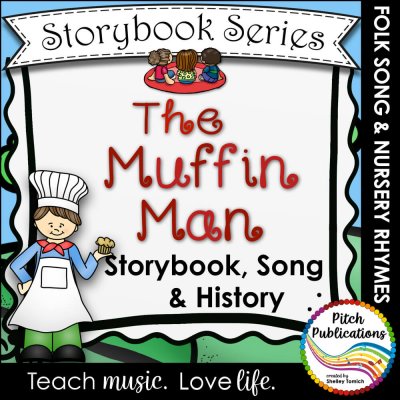 Storybook Series – The Muffin Man (2 versions of the baker) – Folk Song
Storybook Series – The Muffin Man (2 versions of the baker) – Folk Song -
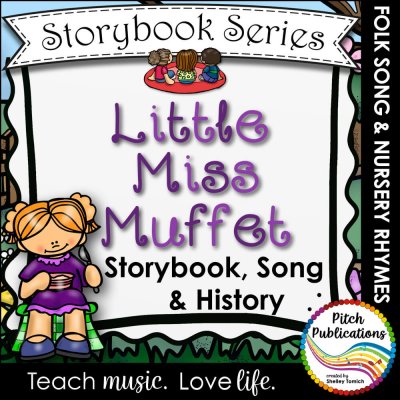 Storybook Series – Little Miss Muffet (2 versions of Little Miss Muffet)
Storybook Series – Little Miss Muffet (2 versions of Little Miss Muffet) -
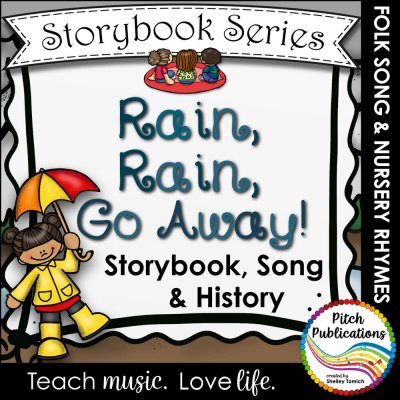 Storybook Series – Rain, Rain, Go Away! – Nursery Rhyme and Folk Song
Storybook Series – Rain, Rain, Go Away! – Nursery Rhyme and Folk Song -
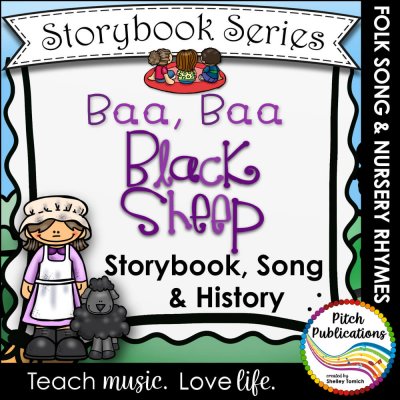 Storybook Series – Baa, Baa, Black Sheep – Nursery Rhyme / Folk Song
Storybook Series – Baa, Baa, Black Sheep – Nursery Rhyme / Folk Song -
 Storybook Series – Itsy Bitsy Spider / Eency Weency Spider – Folk Song
Storybook Series – Itsy Bitsy Spider / Eency Weency Spider – Folk Song -
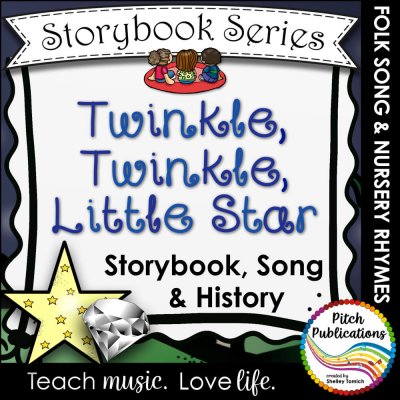 Storybook Series – Twinkle, Twinkle, Little Star – Nursery Rhyme / Folk Song
Storybook Series – Twinkle, Twinkle, Little Star – Nursery Rhyme / Folk Song
Wrapping Things Up
My final advice? When in doubt, bake cookies! (Pillsbury makes an excellent pull apart cookie dough, I must say). A dozen cookies on someone’s desk can make them feel warm and gooey inside (pun intended). This strategy has been around since the beginning of time and is a tried and true method.
If you are new at school and looking for lessons for the first day, you might also enjoy this post on first day lesson plans!
Who did I miss? Any other key people in school we should add?
Musically,
Shelley

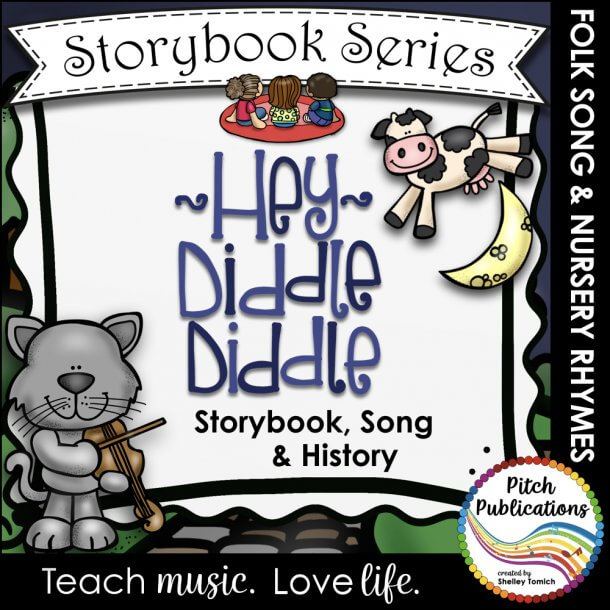



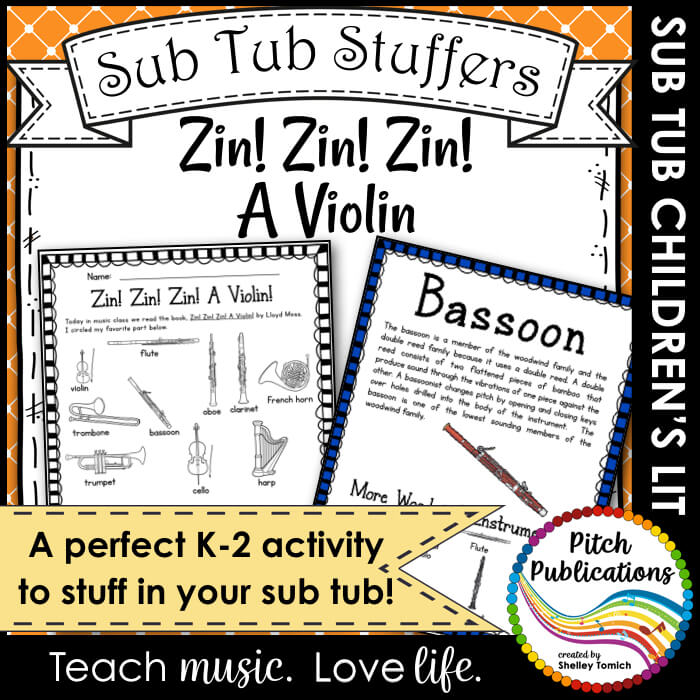

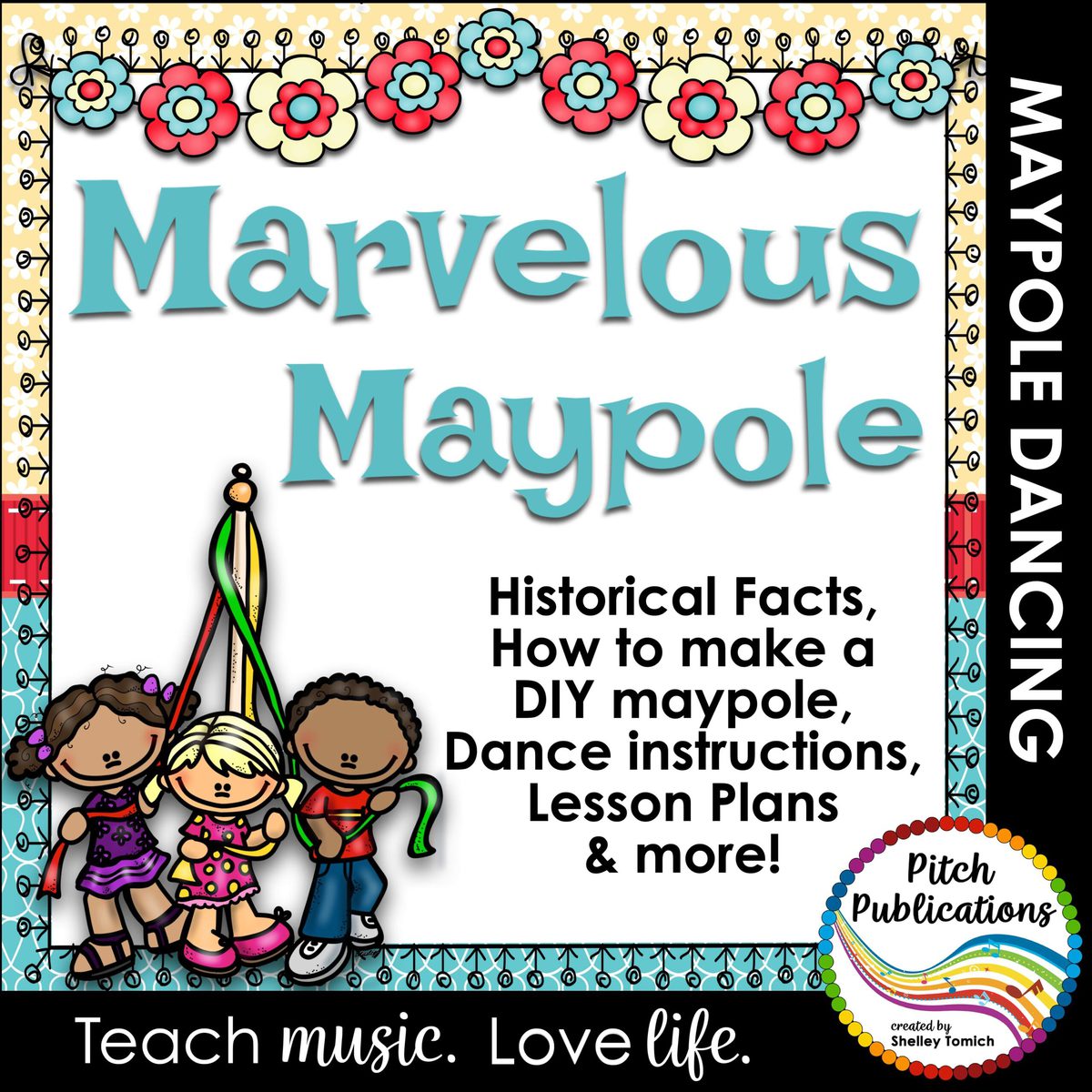


Sign me up! [email protected]
Sorry Joe I missed this! I just added you to my list – you will just need to confirm! 🙂
So true. I tell other teachers all the time how shocked I am at how many students don’t know “Old MacDonald” (and, teaching at a Title I school, I also am shocked at how many don’t know what sound a cow makes… but that’s another story). I spend a lot of time, especially in the younger grades, introducing them to nursery rhymes and folk songs that I feel should be a part of their vocabulary. Thanks for sharing your tips and ideas! #fermatafriday
Right? Thanks for commenting!
Loving these! I’m sharing it! Thanks for the tips and resources!
Thanks for stopping by!
I love your StoryBook Series. They are really fun for engaging some of my youngest kids!
Thanks for stopping by! I appreciate your support!